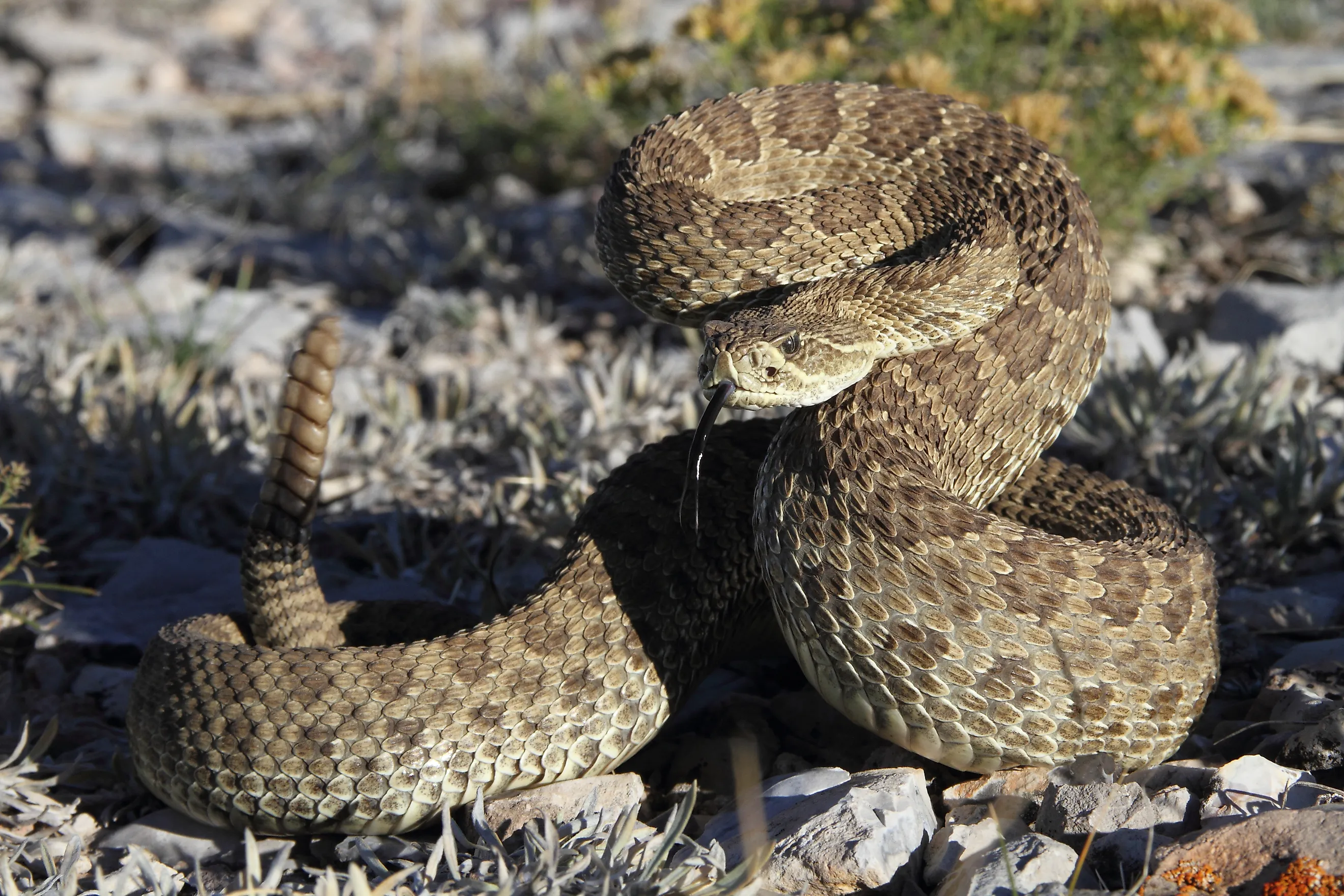
The Most Snake Infested Lakes in Montana
Many stories are told about the snake-infested lakes in Montana. People have surrounded campfires with stories of the swarms of serpents that lie in wait just beyond the safety of the shore. Some of the stories are told as a warning by people who believe them. Others bring a sense of fear for their entertainment or to keep children safe from the water.
However, Montana has an unexpectedly low number of aquatic snakes. The western terrestrial garter snake and the plains garter snake are two of the most common snakes in the state. Neither of these is particularly aggressive, so many stories of snake invasions may be exaggerated or untrue. Still, having fewer snakes is a long way from having none at all. Here's a look at some lakes in Montana where you should stay alert to your surroundings.
Flathead Lake
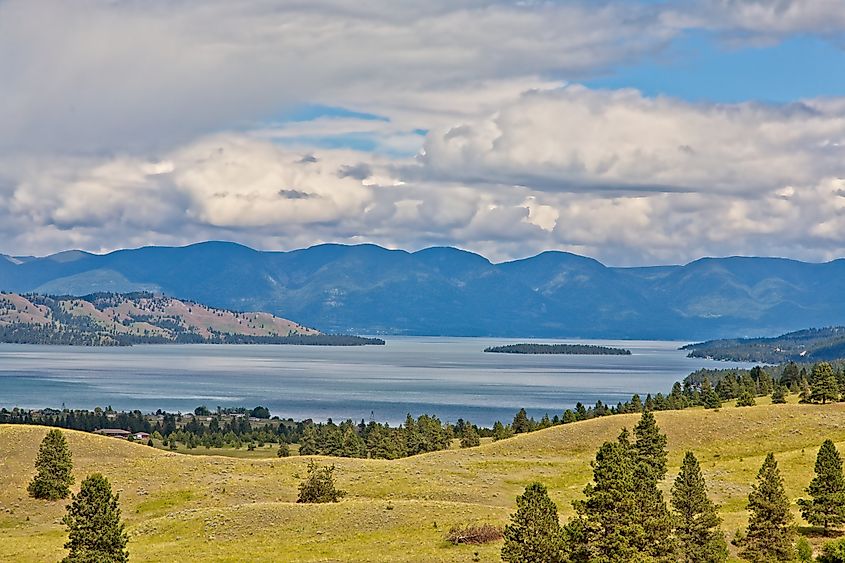
In the northwest portion of Montana, you will find Flathead Lake, which was once part of the prehistoric Glacial Lake Missoula. Today, it is the largest natural body of fresh water in western Montana and has generated electricity through a hydroelectric dam since 1930. The lake is bordered by wilderness on two sides, making it a haven for many types of wildlife. Some of those species are snakes, the most common being the common garter snake, the northern rubber boa. While not many of these species are known to be very aggressive snakes, other dangers could be nearby. For example, the adjacent Flathead Indian Reservation is home to the prairie rattlesnake. This snake is recognized by its prominent brown coloration with dark brown patches throughout. It can reach lengths of up to 5 feet (152 cm) and has a venom that is both hemotoxic and neurotoxic. To this end, the prairie rattlesnake should be avoided at all costs.
Nelson Reservoir
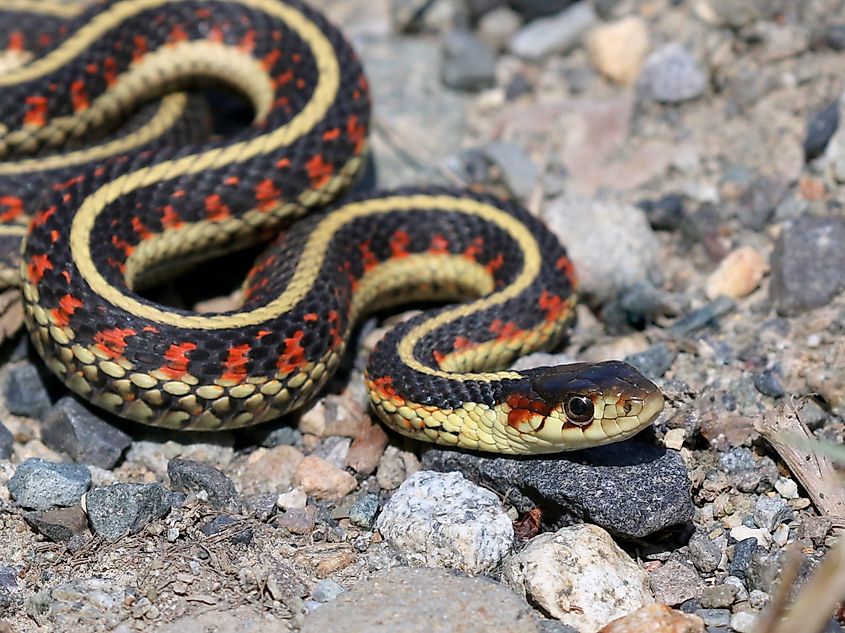
The Nelson Reservoir is one of Montana's hidden treasures, created by damming the Milk River in 1914. This 4,100-acre body of water now serves as a retreat for outdoor enthusiasts looking to fish in the summer and ice fish in the winter. The reservoir is stocked each year with walleye, yellow perch, and northern pike. Additionally, many dry land activities, like bird-watching, are available due to the area's abundant wildlife.
As for snakes, the prairie rattlesnake has been known to make an appearance around Nelson Reservoir. These are usually dry climate creatures, but they use the water to travel from one point to another, which has caused problems for people swimming or boating around the Nelson Reservoir. There have been stories of rattlesnakes crawling into the boat with fishermen. However, those stories are not common. Most snakes found in and around Nelson Reservoir are garter snakes that easily move away from people when they are close. It is also important to know that even though they may not pose a threat to you, they should be left alone. Disturbing any animal in its habitat can disrupt the entire ecosystem.
Whitefish Lake
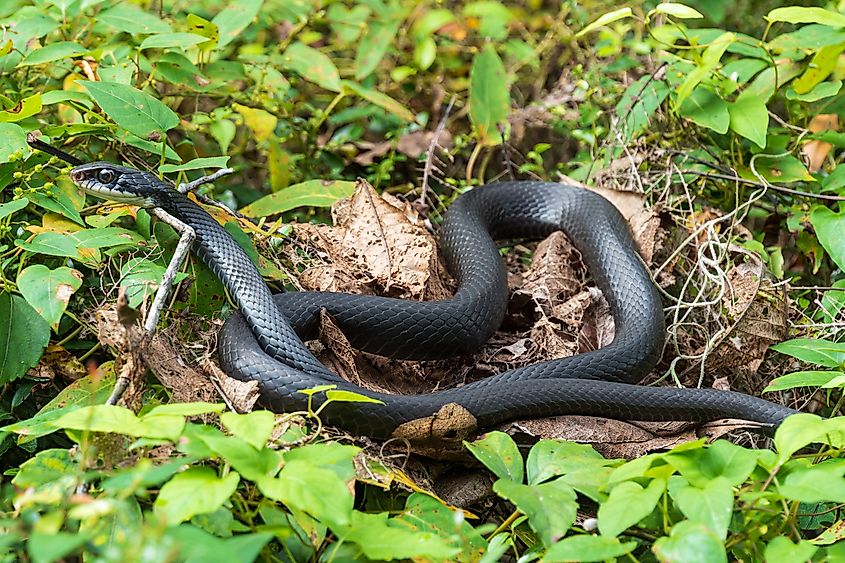
True to its name, Whitefish Lake has a plentiful supply of mountain whitefish that have been feeding people and wildlife since the Native Americans settled in the area. Their numbers have declined in recent years due to the introduction of rainbow trout, which compete with whitefish for resources. Along with these fish, stories of snake infestations in and around this body of water are often told.
Whitefish Lake is home to the western terrestrial garter snake, just like many lakes in Montana. This vibrant snake features yellow, orange, and white dorsal stripes and can reach lengths of up to 41 inches (104 cm). They have mildly venomous saliva that can cause mild pain and swelling in humans if bitten, but serious issues are rare. Nearby, you can also find black racers, which are not inherently dangerous but may give a quick chase as a defense, which can be frightening if it's you they’re after. Prairie rattlesnakes are also spotted nearby, so you should always stay alert for them.
Fort Peck Lake
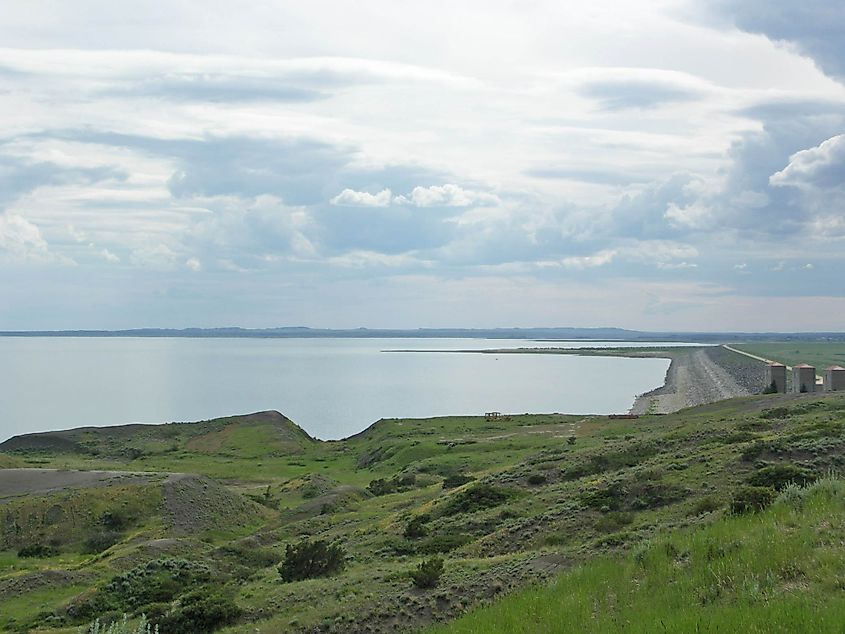
Fort Peck Dam was built in the 1940s because of severe flooding that plagued the area. This led to many delays in the development of the Missouri River Valley. Afterward, Fort Peck Lake was born as a reservoir that helped increase travel in the area. Today, it is the fifth-largest artificial lake in the United States when full and boasts a surface area of nearly 250,000 acres.
There are a few other species of snakes found in and around Fort Peck Lake besides the garter snake, prairie rattlesnake, and black racer. Hog-nosed snakes are abundant in the area, known for their upturned nose that helps them dig in sand or mud. They are not very aggressive but have some toxicity in their bite. You may also find the northern rubber boa, one of the most docile species. The northern rubber boa will probably not strike or bite, but it may give a good jolt to anyone who gets too close.
Other Animals To Look Out For
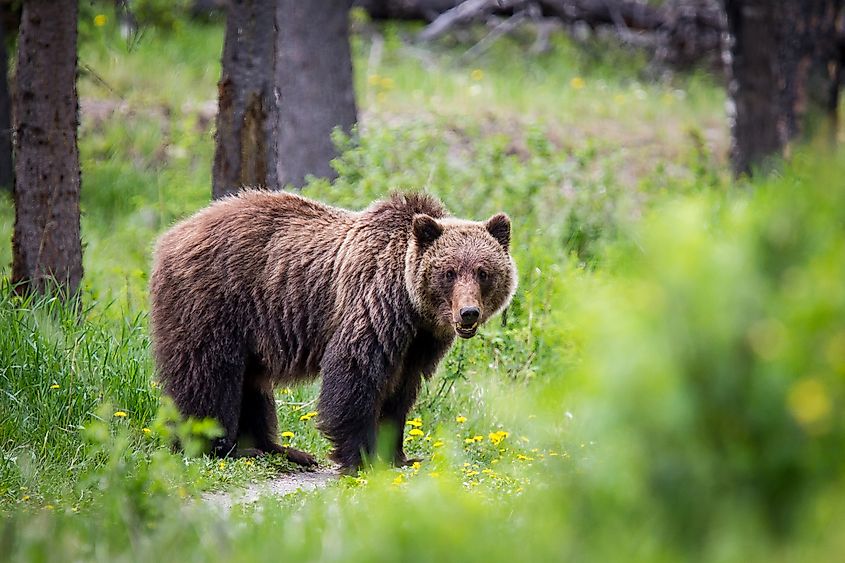
Surprisingly, contrary to the stories that tell us otherwise, snakes are one of the least threatening things you may come across in Montana. Many of the 3,000 lakes in the Big Sky Country are surrounded by mountains and prairies. That makes them accessible to everything that lives there. You could find yourself with small things like scorpions that could sting or a striped skunk that could ruin your day. Some small animal bites from ferrets or wolverines could lead to infections or something more serious, like rabies. Moreover, bobcats are abundant in the mountains of Montana. They can be extremely dangerous in that they are hunters by instinct. They are also territorial and may see you as a threat before you realize you have stumbled into their area.
Among the most dangerous animals you could find in Montana are Moose and Grizzly Bears. These mammals grow to be massive and are both known to be aggressive. With this many animals living nearby, snakes should be low on your list of priorities. If you plan to hike or go camping in the Montana wilderness, be sure to study what to do if you come across some of these dangerous critters.
Conclusion
If you fear snakes but love the outdoors, there may be nowhere better for you to be than Montana. While some areas may be the home of some snake species, only the prairie rattlesnake is one you truly have to worry about. Carry a snakebite kit with you when you go hiking or camping. Seek medical attention immediately if you are bitten. However, you could travel miles and spend days outdoors without encountering a snake.











